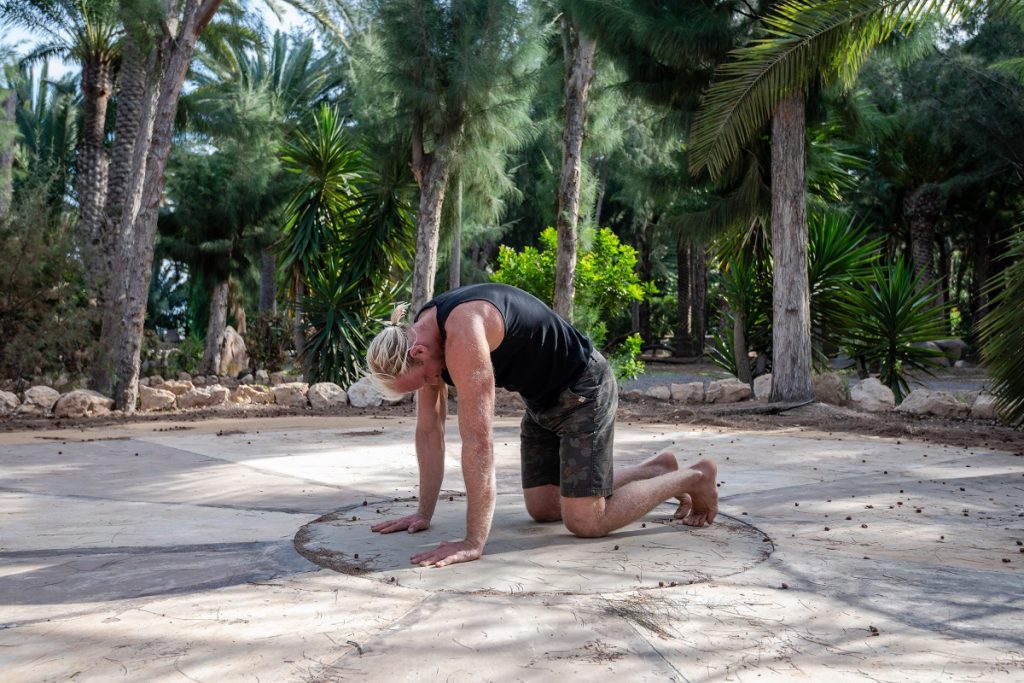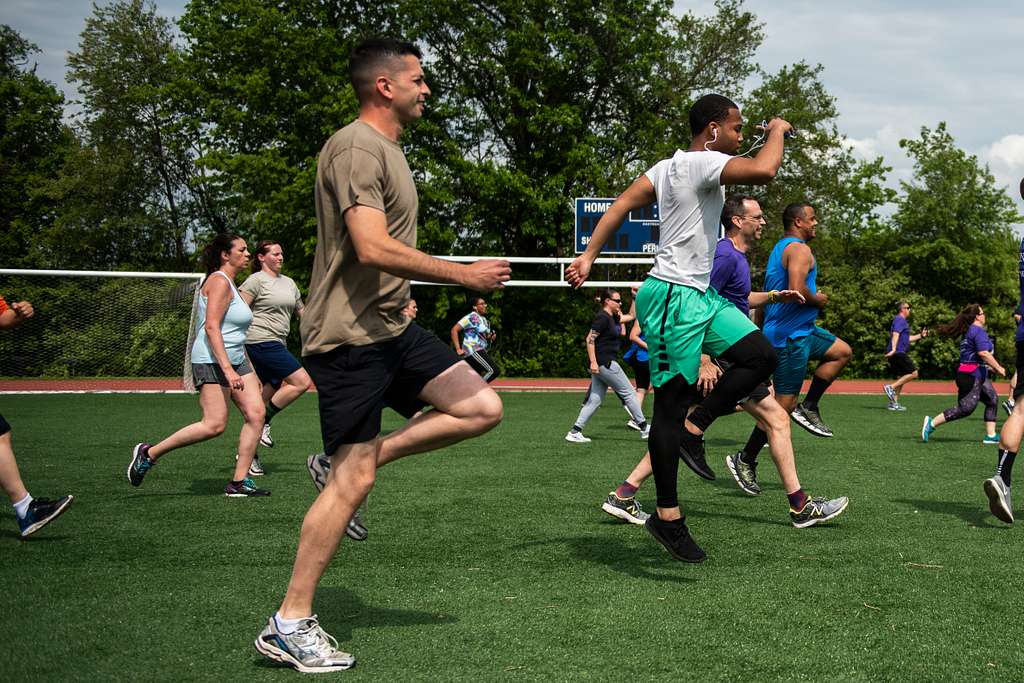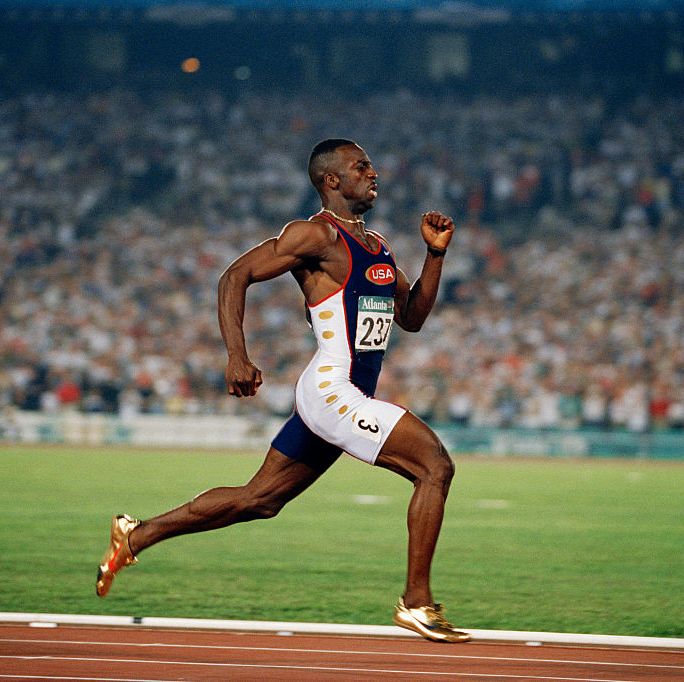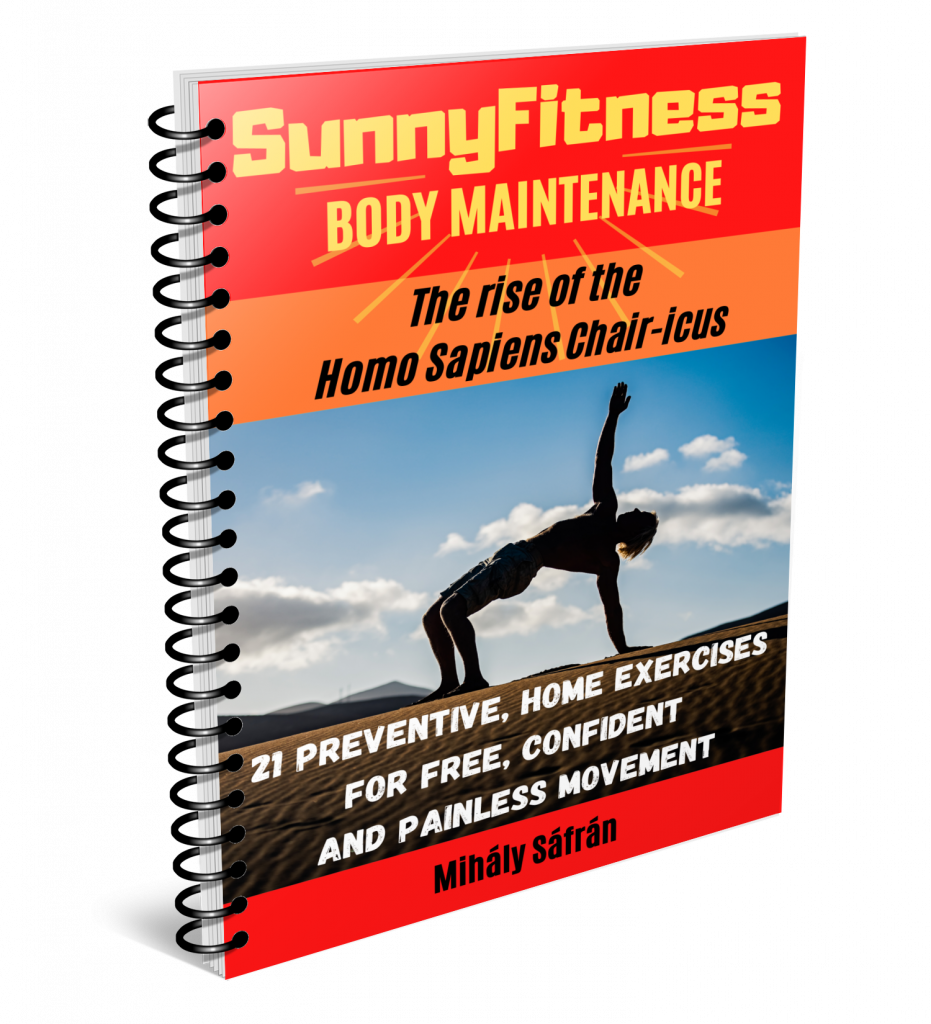The workout starts with a proper warm-up. Or not? Is it really necessary or can you just jump right into it? As with many other topics: it depends! There are many different ways to prepare your body for a workout, but what does an effective warm-up look like and what are the key elements? What are my experiences after thousands of workouts and warm-ups? That’s what the following article will tell you!
The purpose of the warm-up
To prepare the body physically and mentally for a higher level of exertion than everyday activities. A proper warm-up will help you to perform at your best and reduce the risk of muscle and joint injuries. It is also appropriate to prepare the musculoskeletal system, the cardiovascular system and the nervous system!
Warm up in nature and today
In an ideal world, where someone’s musculature and skeleton have developed nicely since childhood according to one’s genetic potential, the muscles are structurally balanced, one has only done natural movements and smartly structured (strength) training all the time, one has not sat on a chair much and has not had any injuries, then in principle one should not really need a warm-up. The muscles are almost always ready for the load. At the most, a little circulatory boosting and special nervous system preparation would be needed, but that’s only before an intense workload.
I wonder when the zebra says to the lion: listen, let’s start the chase in half an hour, because I have to foam roll, stretch and do gymnastics before I’m ready for the maximal sprint. Or the monkey in the tree, I wonder how many upper back mobility, activating exercises he does to get his shoulder blades to move more freely to be able to cling to the tree branches with ease? So, in nature, with a natural lifestyle, warming up is not really typical.
Even our rural ancestors didn’t warm up much before a full day of physical work. It is true that some of them did suffer from pain in the waist, shoulders, knees, etc., which could have been avoided by proper warming up, learning movement techniques, strength training, but this was not available at that time…
Modern civilised man has been training since childhood to become a ‘professional sitter’ by spending hours on the school desk, in a chair, on a sofa, in a car. He moves little in terms of quality and quantity, walks little. He may also carry the traces of an overuse injury or an accident in some sport. It is therefore no wonder that it is not always in a state of readiness, with one or two parts rusted.
Fortunately, with a thorough warm-up, you can oil the rusted parts and get the body in a condition that is quite loadable. Of course there are big individual differences. Also, over time, with cleverly structured corrective exercise, learning movement patterns, mobility and strengthening exercises, you can get much closer to the ideal condition, and less warm-ups may be sufficient.
Depends on what?
The following considerations (and there are other factors…) may help you to see more clearly who-when-how much warm-up may be needed.
- Age: In general, a child with a rubbery body and musculature may need less (or zero) warm-up than an older person with a hunched back. However, age does not determine everything, there can be big individual differences.
- Physique and lifestyle: Some people have a lucky physique, with near-ideal, structurally balanced muscles. They may not need much warm-up. Many have sedentary jobs, stucked in the (school) desk, have been doing monotonous activities for decades, may have some degree of scoliosis, previous injuries ‘left in’. More and more specific warm-ups are definitely recommended for them.
- Weather, temperature: In warm temperatures, muscles reach operating temperature sooner than in sub-zero conditions, where more circulatory enhancing exercises are needed. Except for some weird cold-adapted dudes, or the wolf doesn’t tend to warm up much before a hunt in the bitter cold.
- Time of day: Generally, you need to spend more time getting your body warmed up early in the morning than in the afternoon, when the body is at its most ready state from the circadian rhythm standpoint.
- Training history, body awareness: Those who know their bodies better, who have fought many battles, know how to get themselves ready for action better than beginners. Beginners may need more coordination and specific exercises.
- Activities from the previous hours or days: It does matter whether you want to start training after a nice weekend of rest and relaxation period or after 8-10 hours of sitting, stressful work and a tough training cycle. After work, some monotonous, light aerobic exercise can be a good way to switch into the world of exercise. For those who exercise 2 times a day, perhaps less preparation for the second might be enough, as the body is still somewhat hyped up. At least that’s been my experience.
- The degree of fatigue: When training days come in a row and fatigue builds up, more and more warm-ups may be needed. Fatigue also has degrees. There are times when it is best to skip 1 training session or just do an easy training because the body needs rest. But very often, all it takes is a good warm-up and you can transform a drowsy, unmotivated state into a fighter, ready for anything mode.
- The type of training: A short, light jog or an easy workout doesn’t require much warm-up, but if you’re preparing for a top performance or a competition, a thorough preparation is essential.
Duration
I think the minimum is 5 minutes, but it would be more ideal to spend 10-20 minutes warming up. If time is short, I would cut back on the amount of training rather than the warm-up. Less volume, perfectly prepared and executed, will bring more to the table than bombarding a half-prepared body with a large dose of intense training, risking injury and working below the highest load level potentially available.
For anyone who can’t get themselves in usable condition before a workout in half hour, it’s definitely worth identifying weak links and correcting them with a specialist, using specific exercises. Or simply it’s time to relax instead of training.
The exception is, of course, a big sporting competition, a push to the limit or a test session where you want to get the most out of yourself. In the international elite it is not uncommon to warm up for up to 1 hour before the start. It’s funny or rather contrasting that many 100m sprinters warm up for 1 hour (and train for years) for a 10 second race, but that’s how to get the best out of a in the crowded elite sport competitions.
During warm-up
- Have an arc in the process, start slower and gradually work your way up to the more intense parts.
- Repeat the exercises 3-5 times or as many times as you feel it good for you (just please not for half an hour…)
- For the mobility exercises, perform slow, controlled movements without momentum. For the dynamic ones, add a little speed and explosiveness.
- Match the rhythm of your breathing to the movement, breathing in and out through your nose.
The classical school
You may remember the classical gymnastic exercises at the beginning of PE lessons. It’s a nicely structured system in 15-25 minutes, which may be adequate before most sports activities, but before maximum effort, I think it is not enough and contains unnecessary elements. Main parts:
- Moderate stretching exercises. 1-2 minutes
- Circulation-enhancing, heat-producing exercises. 3-5 minutes
- Main stretching exercises. 5-8 min
- Specific exercises to increase circulation. 2-3 min
- Strengthening exercises. 1-2 min
- Sport specific exercises
New approaches
In the world of the internet and the era of the booming fitness industry, a million different ” the best” exercises and tools have emerged. I’m thinking here of mobility and rehab-prehab exercises, foamrollers, massage balls, rubber bands and other weird ‘torture devices’. I think there are many useful, scientifically proven, effective methods, but also many unnecessary ones.
Extreme cases
I had the pleasure of seeing the warm-up of many kayak-canoe elite athletes. The majority of them were consciously warming up for a total of 30-60 minutes. But I have also seen a few who just got in the boat after 1-2 arm swings, paddled on the start line and won the race. They are pretty rare exceptions and not the category that has been at the forefront of every race and for decades.
I also heard a rumour about the 90’s 200-400m sprinter legend Michael Johnson that his warm up consisted of a masseur/chiropractor/wizard giving him a little massage, chiropractic on the bench, then he got on the track and ran a world record. True or not, I don’t know. I can imagine it, perhaps with some additional running drills. Unlike him, the fastest sprinter ever, Usain Bolt, has been warming up a lot and has also been using a physiotherapist, as he lives with scoliosis. How fast would he have run if he hadn’t had this not-so-advantageous condition?
So there are exceptions, and I think that requires an excellent physique, structural muscle balance and a very rare mental state.
To stretch or not to stretch? That is the question!
Studies have shown that static stretching before a workout reduces maximum power output and may even increase the risk of injury. It might be time to abandon this method from some classic warm-up methods. Dynamic stretching (e.g. leg swings, arm circles, mobility exercises) makes much more sense.
For those who are very stiff in certain places, this should be addressed separately with specific strengthening and not with half hour stretching before a workout. Static stretching may have its place here and there in my opinion, but not before a workout. After a workout, maybe briefly combined with slow breathing to calm down the overstimulated sympathetic nervous system. Otherwise, I would prefer to use it as a separate “workout” if there is time for it. A fitness trend of recent years, with good results showing that a very high level of usable flexibility can be achieved through strengthening and mobilising exercises without static stretching. Guess what, I can almost do splits now! Just as a side effect of my trainings, with almost zero passive stretching. The last time I was able to do splits was probably in kindergarten…
After sitting

After several hours of sitting, I don’t think it’s a good idea to just jump right into a workout. This is when some extra mobilisation work for the hips, upper back, ankles, wrists can be wise. More activating exercises for the lazy glutes, posterior chain, scapular mobility and stabilisation muscles, simple hanging to decompress the spine and some kind of aerobic activity.
My own warm-up philosophy
I have been exercising almost every day for about 30 years, so I have had the pleasure of training and warming up thousands of times, and I have also led close to a thousand fitness classes. I have tried many different methods. Many times I’ve used the same routine for weeks or months, but over time I’ve always liked to change it up here and there. Of course, it always depended a lot on my current condition (e.g. injuries, fatigue), time available and the type of training. In fact, I could go into any workout without warming up, but I know I wouldn’t be doing my best and would be more likely to get injured.
Canoeist era: Before my races, what worked best for me was when I started doing gymnastics about 45-50 minutes before the start (general warm-up). With my current knowledge, this part could have been better… Before that, if there was a chance, maybe a light massage with a “muscle-burning” warm-up cream gave me an extra plus.
I went in the water 30 minutes before the start and did a short interval workout (special warm-up). 4-5 minutes of easy pacing, followed by e.g. 2-3×1-2min (near race pace), 3×30 sec (above race pace), 1-2 start drills (max effort). The last starting exercise was 4-5 min before the start (let the creatine and ATP stores recharge), after that just easy paddling. This way I always managed to get myself in a ‘warrior’ state and get the most out of myself. I didn’t have to worry about fatigue, as we’d been training enough for years, this amount didn’t wear me down, it fired me up.
In hindsight, as canoeing is not a natural form of movement and paddling technique is also very important, I needed a lot of special warm-ups to get every nerve fibre focusing on the movement. This can apply to many other sports as well.

Nowdays: In recent years, an effective idea has crystallised in my mind. There are short, 5-10 minute versions and more thorough 30-40 min programmes if I can fit them into my time and am preparing for maximum effort. I’m not one of the lucky ones in terms of warm-up (scoliosis and previous injuries), I’m also in front of a computer a lot, so I always need some preparation before a serious workout. But slowly things are improving and I can activate myself with less and less warm-ups. I haven’t done any static stretching before training at all for the last 10 years.

I will list some key elements that can be achieved through a variety of exercises and almost always appear in my warm-up. In brackets are the optional parts, if there is time and I really strive for the best.
(light aerobic running or jumping jacks) 2-3 minutes
spinal movements 1-2 minutes
(full body foam rolling) 5-8 min
joint mobilization exercises, spending more time on stiffer parts and consciously connecting breathing with movement 3-8 min
(light strengthening exercises to activate and tone muscles, stabilize joints) 2-3 minutes
(dynamic stretching exercises) 2-3 minutes
specific, progressive exercises for the workout movements 3-10 minutes
I’m constantly uploading warm-up exercise samples to my YouTube channel, check them out HERE and feel free to use what works for you!
In summary
Except for a few rare ‘UFOs’, I think most people need a pre-workout warm-up of 5-20 minutes. Particularly if you want to get a high level of performance out of yourself (then even more time can be spent on it) and reduce the risk of injury. It is important to prepare the musculoskeletal, the cardiovascular and the nervous systems.
After a good warm-up you should sweat a little, your joints are looser and your muscles more toned, your mental focus is sharp and you are in the ‘beast mode’. On the better days, it’s a “give me the lion” state.
In the warm-up world, there are many different methods that can lead to the peak and there are many individual factors. Use what works for you and be open to incorporating new elements and ditching outdated ones! You shouldn’t necessarily stick to a fixed routine, always pay attention to your body’s current condition and needs!
Join the SunnyFitness camps and train with us, learn more about the training methods!
Contact me for a personalised, time efficient training plan or advices on how to prepare: CLICK HERE!
My SunnyFitness books can also help upgrade your sport and everyday life performance to the next level!










